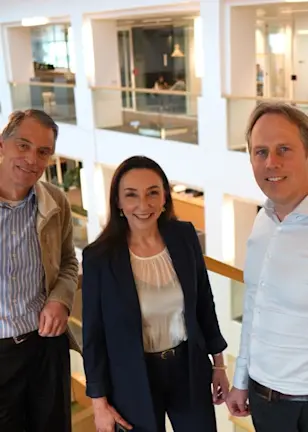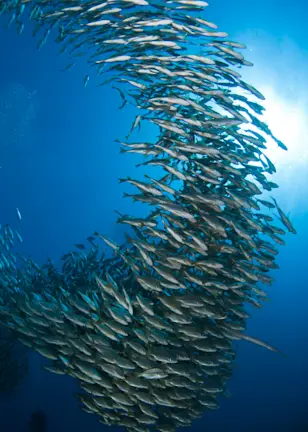Disclaimer
1. General
Please read this information carefully.
This website is prepared and issued by Robeco Hong Kong Limited ("Robeco"), which is a corporation licensed by the Securities and Futures Commission in Hong Kong to engage in Type 1 (dealing in securities); Type 2 (dealing in futures contracts); Type 4 (advising in securities) and Type 9 (asset management) regulated activities. The Company does not hold client assets and is subject to the licensing condition that it shall seek the SFC’s prior approval before extending services at retail level. This website has not been reviewed by the Securities and Futures Commission or any regulatory authority in Hong Kong.
2. Important risk disclosures
Important risk disclosures Robeco Capital Growth Funds (“the Funds”) are distinguished by their respective specific investment policies or any other specific features. Please read carefully for the risks of the Funds:
Some Funds are subject to investment, market, equities, liquidity, counterparty, securities lending and foreign currency risk and risk associated with investments in small and/or mid-capped companies.
Some Funds are subject to the risks of investing in emerging markets which include political, economic, legal, regulatory, market, settlement, execution, counterparty and currency risks.
Some Funds may invest in China A shares directly through the Qualified Foreign Institutional Investor (“QFII”) scheme and / or RMB Qualified Foreign Institutional Investor (“RQFII”) scheme and / or Stock Connect programmes which may entail additional clearing and settlement, regulatory, operational, counterparty and liquidity risk.
For distributing share classes, some Funds may pay out dividend distributions out of capital. Where distributions are paid out of capital, this amounts to a return or withdrawal of part of your original investment or capital gains attributable to that and may result in an immediate decrease in the net asset value of shares.
Some Funds’ investments maybe concentrated in one region / one country / one sector / around one theme and therefore the value of the Fund may be more volatile and may be subject to concentration risk.
The risk exists that the quantitative techniques used by some Funds may not work and the Funds’ value may be adversely affected.
In addition to investment, market, liquidity, counterparty, securities lending, (reverse) repurchase agreements and foreign currency risk, some Funds are subject to risk associated with fixed income investments like credit risk, interest rate risk, convertible bonds risk, ABS risk and the risk of investments in non-investment grade or unrated securities and the risk of investments made in non-investment grade sovereign securities.
Some Funds can use derivatives extensively. Robeco Global Consumer Trends Equities can use derivatives for hedging and efficient portfolio management. Derivatives exposure may involve higher counterparty, liquidity and valuation risks. In adverse situations, the Funds may suffer significant losses (even a total loss of the Funds’ assets) from its derivative usage.
Robeco European High Yield Bonds is subject to Eurozone risk.
Investors may suffer substantial losses of their investments in the Funds. Investor should not invest in the Funds solely based on the information provided in this document and should read the offering documents (including potential risks involved) for details.
3. Local legal and sales restrictions
The Website is to be accessed by “professional investors” only (as defined in the Securities and Futures Ordinance (Cap.571) and/or the Securities and Futures (Professional Investors) Rules (Cap.571D) under the laws of Hong Kong). The Website is not directed at any person in any jurisdiction where (by reason of that person’s nationality, residence or otherwise) the publication or availability of the Website is prohibited. Persons in respect of whom such prohibitions apply or persons other than those specified above must not access this Website. Persons accessing the Website need to be aware that they are responsible themselves for the compliance with all local rules and regulations. By accessing this Website and any of its pages, you acknowledge your agreement with understanding of the following terms of use and legal information. If you do not agree to the terms and conditions below, do not access this Website or any pages thereof.
The information contained in the Website is being provided for information purposes.
Neither information nor any opinion expressed on the Website constitutes a solicitation, an offer or a recommendation to buy, sell or dispose of any investment, to engage in any other transaction or to provide any investment advice or service. The information contained in the Website does not constitute investment advice or a recommendation and was prepared without regard to the specific objectives, financial situation or needs of any particular person who may receive it. An investment in a Robeco product should only be made after reading the related legal documents such as management regulations, prospectuses, most recent annual and semi-annual reports, which can be all be obtained free of charge at www.robeco.com/hk/en and at the Robeco Hong Kong office.
4. Use of the Website
The information is based on certain assumptions, information and conditions applicable at a certain time and may be subject to change at any time without notice. Robeco aims to provide accurate, complete and up-to-date information, obtained from sources of information believed to be reliable. Persons accessing the Website are responsible for their choice and use of the information.
5. Investment performance
No assurance can be given that the investment objective of any investment products will be achieved. No representation or promise as to the performance of any investment products or the return on an investment is made. The value of your investments may fluctuate. The value of the assets of Robeco investment products may also fluctuate as a result of the investment policy and/or the developments on the financial markets. Results obtained in the past are no guarantee for the future. Past performance, projection, or forecast included in this Website should not be taken as an indication or guarantee of future performance, and no representation or warranty, express or implied, is made regarding future performance. Fund performance figures are based on the month-end trading prices and are calculated on a total return basis with dividends reinvested. Return figures versus the benchmark show the investment management result before management and/or performance fees; the fund returns are with dividends reinvested and based on net asset values with prices and exchange rates of the valuation moment of the benchmark.
Investments involve risks. Past performance is not a guide to future performance. Potential investors should read the terms and conditions contained in the relevant offering documents and in particular the investment policies and the risk factors before any investment decision is made. Investors should ensure they fully understand the risks associated with the fund and should also consider their own investment objective and risk tolerance level. Investors are reminded that the value and income (if any) from shares of the fund may be volatile and could change substantially within a short period of time, and investors may not get back the amount they have invested in the fund. If in doubt, please seek independent financial and professional advice.
6. Third party websites
This website includes material from third parties or links to websites maintained by third parties some of which is supplied by companies that are not affiliated to Robeco. Following links to any other off-site pages or websites of third parties shall be at the own risk of the person following such link. Robeco has not reviewed any of the websites linked to or referred to by the Website and does not endorse or accept any responsibility for their content nor the products, services or other items offered through them. Robeco shall have no liability for any losses or damages arising from the use of or reliance on the information contained on websites of third parties, including, without limitation, any loss of profit or any other direct or indirect damage. Third party off-site pages or websites are provided for informational purposes only.
7. Limitation of liability
Robeco as well as (possible) other suppliers of information to the Website accept no responsibility for the contents of the Website or the information or recommendations contained herein, which moreover may be changed without notice.
Robeco assumes no responsibility for ensuring, and makes no warranty, that the functioning of the Website will be uninterrupted or error-free. Robeco assumes no responsibility for the consequences of e-mail messages regarding a Robeco (transaction) service, which either cannot be received or sent, are damaged, received or sent incorrectly, or not received or sent on time.
Neither will Robeco be liable for any loss or damage that may result from access to and use of the Website.
8. Intellectual property
All copyrights, patents, intellectual and other property, and licenses regarding the information on the Website are held and obtained by Robeco. These rights will not be passed to persons accessing this information.
9. Privacy
Robeco guarantees that the data of persons accessing the Website will be treated confidentially in accordance with prevailing data protection regulations. Such data will not be made available to third parties without the approval of the persons accessing the Website, unless Robeco is legally obliged to do so. Please find more details in our Privacy and Cookie Policy.
10. Applicable law
The Website shall be governed by and construed in accordance with the laws of Hong Kong. All disputes arising out of or in connection with the Website shall be submitted to the exclusive jurisdiction of the courts of Hong Kong.
Please click the “I agree” button if you have read and understood this page and agree to the Disclaimers above and the collection and use of your personal data by Robeco, for the purposes for which such data is collected and used as set out in the Privacy and Cookie Policy, including for the purpose of direct marketing of Robeco products or services. Otherwise, please click “I Disagree” to leave the website.
Climate investing
Solutions
The solution to climate change can be summed up in one word – decarbonize. Investors serious about climate therefore need to look for net zero solutions. Robeco offers climate-orientated investment strategies; from bespoke net zero funds to more thematic strategies targeting renewable energy and the technology behind it, we’re at the forefront of making the world more sustainable.

Robeco’s Global Climate Survey of 2024 showed that the number of investors globally who have made a firm commitment to net zero remained constant at 25%, rising to 37% of European investors. Commitments in Asia-Pacific rose to 26% of investors, up from 20% in 2023. Some 17% of global investors said they were in the process of evaluating a net zero commitment, and a further 27% were investigating whether it would work for their portfolios. However, interest in North America has declined due to a backlash against ESG investing generally.
There is both the appetite for making a difference and a wealth of solutions available. These fall broadly into four main categories:
Bespoke climate funds that specifically target the equities of companies that can combat global warming, from those in renewable energy and emissions reduction technology to those in related topics such as biodiversity.
Decarbonization funds linked to Paris-aligned benchmarks that look to reduce the carbon footprint of existing high-emitting investments by the 7% a year required to achieve net zero by 2050. These include companies that are currently part of the problem, but which can change to become part of the solution.
Thematic investments that look for wider and more holistic solutions to create a more sustainable world, such as sustainable water, the circular economy, and the ‘smart’ way to look at future energy, mobility and materials. These are explained in more detail below.
Funds that look for companies making contributions to the Sustainable Development Goals (SDGs), one-third of which are directly related to combating climate change, such as SDG 12 (responsible consumption and production).
The sustainable transition
Sustainable transition signifies the biggest intentional change for people and our planet in history. Transition investing targets companies who may be at the beginning of this journey to improve human well-being and combat climate change. This provides numerous investment opportunities. We use forward-looking metrics to identify companies with sustainable potential, and offer investment solutions to seize these opportunities.
How we can generate alpha
In order to navigate the transition investment landscape and generate alpha, we need to understand the direction of travel and identify the winners and losers in this dynamic process. There is a broad universe to assess, as transition investing targets companies who may be at the beginning of their decarbonization journeys.
While regulation is currently driving transition momentum, this journey is set to last several decades. Any company currently preparing for a low-carbon future will have a significant advantage over those that are not. Our investment process recognizes the multiple dimensions of the transition to create robust and resilient investment solutions that understand both the complexity and the longevity of this transition – all with our eyes on the prize of generating alpha.
The transition is about the future and the ability to navigate changing environments - regulatory or otherwise. Both public and private markets are needed to make this happen. Choosing the right investments requires us to develop clear frameworks that embrace the dynamic and multi dimension of transition.
Making it investible
The challenge for professional investors lies in translating transition concepts into investable portfolio assets. This requires a hard look at who qualifies, and on what grounds. As always, getting hold of the right research and data is crucial to find the transition champions.
How companies are deploying and using their capital expenditures to finance a more sustainable future is key. Robeco has decades of experience in understanding just that and making the right investment calls. It’s essential to acquire as much forward-looking data as possible. Emissions data is a good way to track progress, but it is backward-looking. Our SI teams have developed research frameworks that aim to predict future patterns rather than past. Plotting future moves is a new frontier for most asset managers, but Robeco has decades of experience in developing and refining its sustainable investing practices.
Global opportunity, Asia sets the pace
The sustainable transition presents a worldwide opportunity, yet the forefront of combating climate change lies predominantly within Asia. Asia accounts for half of the world’s greenhouse gas emissions and is home to about 60% of the global population. Despite the acute need for Asia’s transition, flows toward these investments have been hampered by limited applicable standards, considering the consider the region’s diverse geographical and economic challenges.
That’s why our emerging markets teams specifically look at Asia, and from a ringside seat from Robeco’s offices in Hong Kong, Shanghai and Singapore. Our local expertise can identify solutions, such as using corporate bonds and green bonds to direct capital to the right places. This doesn’t mean the rest of the world can rest on its laurels. Globally, all companies need to create their own business ecosystems that will help them find their path toward climate‐resilient development.
Climate investing is more than just the next big thing
Lucian Peppelenbos (Climate Strategist) and Carola van Lamoen (Head of Sustainable Investing) look at climate change and climate investing from all angles. Listen to the trailer or to the full 25-minute podcast.
The planet’s growing but resources are shrinking
From field to fork, smart farming uses technology to optimize resources, improve yields, reduce waste, conserve biodiversity and increase food security across the food value chain. Our Sustainable Water and Circular Economy Equities strategies invest in companies focused on applying technological advancements that target depleting water supplies as well as smart farming techniques for soil and crop management.
More people, less land, less water
The UN estimates that by 2050 human populations will grow to 9.7 billion. That means more than 65 million additional mouths need feeding every year, adding pressure on food and agricultural sectors to produce more to keep pace. Moreover, land is getting even scarcer as populations and cities expand exponentially. The number of megacities – defined as having more than 10 million inhabitants – is increasing worldwide, particularly in developing markets.
Land is not the only critical resource in short supply. As populations boom, so does their water consumption. Global water demand already exceeds supply, with two billion people currently living in areas of acute water stress.
Moreover, water withdrawals are dominated by the agricultural sector, as the water used to produce food is exponentially more than what is used for personal consumption. To illustrate, just one apple requires more than 70 liters of water to produce.
Worldwide, dietary habits are shifting from staples such as roots, tubers and cereal grains towards animal proteins like meat and dairy that demand exponentially greater inputs of water and other resources. Though some of these shifts are healthy and desirable, they are also resource-intensive and costly and intensify pressure on water supplies. For example, producing one kilogram of beef requires 15,000 liters of water.
Environmental challenges
To super-charge crop yields, industrial agriculture has turned to synthetic fertilizers, herbicides and pesticides to stimulate and protect plant growth. However, while effective at improving yields in the short-term, they have also had disastrous long-term effects on the surrounding land and ecosystems. Excess chemicals seep down into natural aquifers and flow into streams, rivers, lakes and ponds, killing native plant species and wildlife.
Moreover, farming and agriculture is acutely vulnerable to the damaging effects of global warming. In some regions, crops are lost to over-precipitation and flooding, whereas in other areas crops suffer due to heat waves and drought. Farmers need to adapt at an accelerated pace to avert crop damage and lost harvests. At the same time, to feed the world without damaging the planet, farmers need to optimize resources and develop climate-smart agricultural practices so that productive and resilient agriculture can be achieved.
Increasing supply, protecting quality
Robust water supplies are essential for agricultural productivity. Our Sustainable Water strategy invests in companies providing solutions to maximize water resources across the water extraction and reuse cycle. In areas of water scarcity, portfolio companies are developing methods to secure water from surrounding environment. Many land-locked countries are investing in technologies to capture and clean rainwater. At the other extreme, arid countries with access to ocean waters are investing in desalination plants. Wastewater purification via microfiltration membranes and ultraviolet light are also effective technologies helping regions to counter chronic water shortages.
Furthermore, to transport water to fields and farms, efficient networks of pumps, pipes valves and irrigation systems are needed. Thanks to digitalization, these networks and systems are being equipped with sensors that rapidly detect leaks and breaks, monitor soil moisture levels, and customize water doses according to soil need. In addition, advances in water treatment and analytics are helping identify and extract chemicals, fertilizers, and contaminants from waste and run-off water so that it can be safely returned to the environment or recycled back into the system.
Finally, the importance of water extends beyond hydrating and nourishing crops. Improving soil’s water retention helps restore organic matter and reduce erosion. This leads to more nutritious crops and healthier livestock.
From plants to plates
Ensuring safe water supplies isn’t the only approach to sustainable agriculture. From plants to plates, our Circular Economy strategy is investing in solutions that increase efficiencies across farming and food systems. Smart farming’s focus on reducing inputs and protecting soils and vegetation makes it an area ripe for application of circularity principles. GPS technology is already widely used to navigate tractors and harvesters, reducing costs and CO2 emissions associated with operating farming machinery.
Moreover, AI and machine learning can teach agricultural equipment to detect weeds in fields and to automatically apply crop protection chemicals with unprecedented precision and accuracy.
As a result, the volume of chemicals required can be reduced by up to 90%, significantly protecting biodiversity without compromising crop yields.
Population growth, scarce resources and climate change are straining the agricultural sector as well as the environment. Our Sustainable Water and Circular Economy investment strategies are helping address these challenges by providing solutions that are not only effective and efficient for crops and livestock, but also beneficial for all life on the planet.
Thematic Investing
Targeted, real-world solutions to global sustainability challenges
We believe that addressing global sustainability challenges offers a significant, long-term value proposition. Climate change, resource scarcity, endangered biodiversity as well as unhealthy lifestyles are all examples of real-world obstacles that reduce society's optimal growth and development.

Clean electrification to drive the global economy to net zero
Getting to net zero in the 21st century and mitigating climate disaster require industry to shift gears, switch fuels and change course.
The expansion of renewables is a powerful catalyst that is enabling the development of clean technologies and solutions across the energy value chain. Mass deployment of solar and wind- power is helping decarbonize electricity generation, and intelligent electrical grids ensure energy demand always matches supply. Grid-connected batteries and green hydrogen will ensure surplus electricity is stored for later use. Moreover, the clean electrification of heavy-carbon emitting areas like passenger mobility, transport logistics and building heat are already underway and gaining momentum.
As electrification spreads and demand for electricity increases, the energy generated will need to be consumed efficiently. Next-generation technologies are helping to reduce energy consumption in power-hungry applications and end-user devices in buildings, industrials, transportation and IT sectors.
Our Smart Energy and Smart Mobility strategies invest across the clean energy and transportation value chains, providing investors diversified exposure to the megatrends of decarbonization and sustainable mobility.
Energy meets urgency
Populations and economies need energy. Unfortunately, primary energy supplies are still dominated by hydrocarbons, and global carbon emissions continue to rise. The urgency of climate change has propelled efforts to “green” the global economy, triggering disruptive innovation that is rapidly altering the energy landscape.
Governments worldwide have announced massive new initiatives aimed at decarbonizing entire economies. Prominent among them are strong commitments from the US and China, which are finally aligned with global ambitions to tackle climate change.
Front and center in the race to decarbonize is the carbon-free electricity provided by renewables. Internal projections show that by 2050, solar power generation is likely to increase by a factor of 20, while wind power generation from on and off-shore sources will increase by a factor of 10. This will allow the share of electricity as a percent of global energy consumption to grow from 20% today to 50% by 2050. In parallel, renewables’ share of the electricity mix will nearly triple.
Electrification of transport
The electrification of the transport sector has already developed considerable momentum in recent years and will continue to be an important theme for energy-related investments. Electric vehicle (EV) sales have risen sharply in key markets like Europe and China and should remain strong. Again, internal estimates show global EV sales in 2021 nearly doubling from 2020 which was already an extraordinary year marked by 130% year-on-year growth in Europe and a significant rebound in China towards year end.
The strategies’ investments in transportation are not limited to EV producers; they also cover a whole range of ancillary companies within the EV ecosystem that supply essential parts such as power semiconductors, battery storage, sensors and actuators, as well as EV charging infrastructure.
Electrification of the built environment
Transport is not the only high-emission sector being transformed by electrification; the built environment is also in transition. According to the International Energy Agency, buildings and building construction combined are responsible for over a third of final energy consumption globally and nearly 40% of direct and indirect carbon emissions.
Driven by stricter emission standards and the prospect of lower energy costs, commercial buildings are turning to clean electrification to power and regulate everything from heat pumps and cooling to energy-efficient lighting and building management systems.
Green hydrogen – the missing link
The trend towards electrification is also driving other essential parts of the energy equation. Solar and wind power are clean but also weather dependent and intermittent. Cheap solutions must be created to temporarily store any surplus energy generated. Within passenger transport, lithium ion batteries within electric vehicles are providing cost-effective energy storage solutions; and further improvements are on the horizon.
Larger-scale industries are more energy intensive and difficult to electrify, but even here clean solutions are emerging. Green hydrogen is created by splitting water into hydrogen fuel and oxygen using carbon-free electricity from renewables. As it scales and becomes more cost-competitive, it will provide a critical link in decarbonizing high-carbon emitting industries like long-haul transportation (e.g. trucks, trains, ships and aircraft) and industrial sectors (e.g. semiconductors, fertilizers, and steel production).
Powering up an investment portfolio
Decarbonization of energy goes well beyond the production of solar panels and wind turbines. Reaching net zero in this century will require transformation across the entire energy value chain.
Our Smart Energy and Smart Mobility strategies give investors diversified exposure to these long-term investment trends that are transforming the energy sector and moving us closer to a carbon-neutral future. The Smart Materials fund specializes in the compounds that are fueling (in a greener way) the transition.

Green Bonds
Leveraging a five-step proprietary process to mitigate greenwashing while creating a positive impact
A green bond is a bond that is specifically earmarked to raise money for climate and environmental projects. This strategy has been very successful with issuance over USD 1 trillion between 2015-2022. However, the term ‘green bond’ is not legally protected. That’s why Robeco uses a proprietary framework to select truly green bonds for its strategy.
















